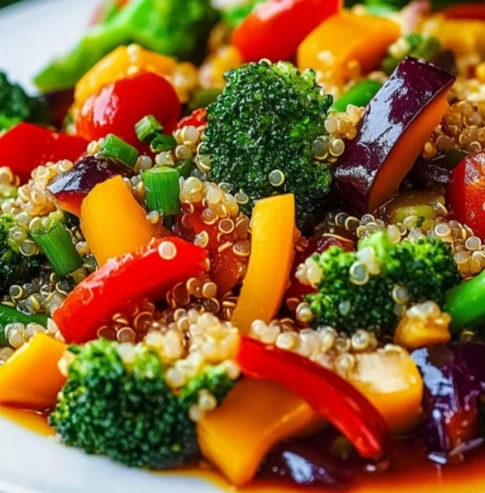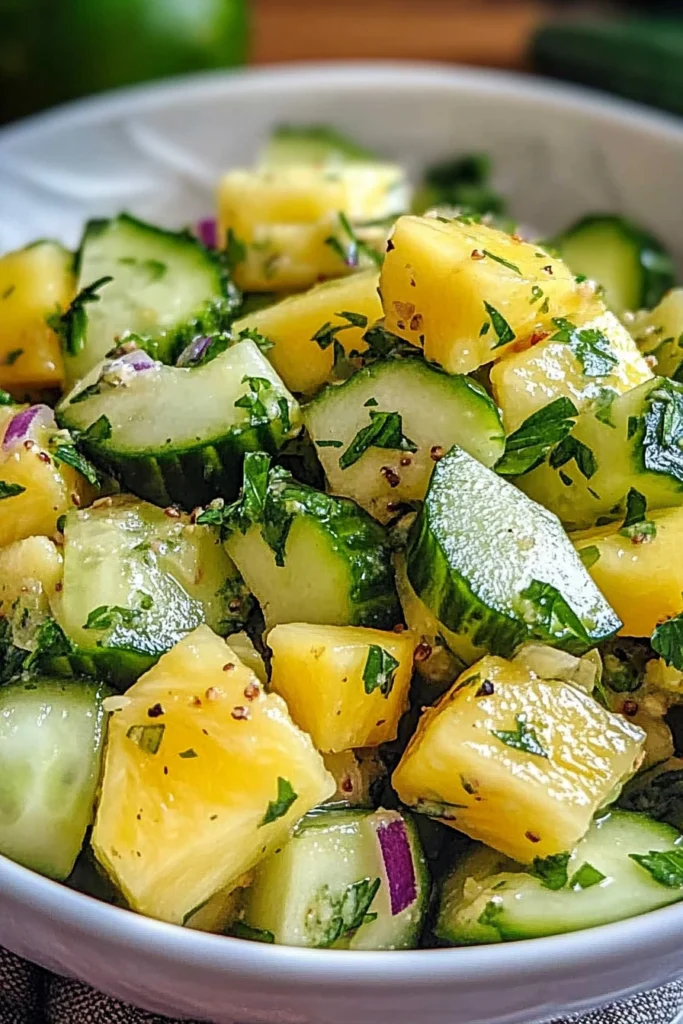There’s something timeless about a good omelette. Simple, nourishing, and endlessly customizable, it’s one of those dishes that can fit every mood, diet, and lifestyle. But when you swap out the cheese-heavy or meat-filled versions for a veggie omelette, you’re not just lightening up your breakfast—you’re supercharging it with color, vitamins, and natural flavor.
A veggie omelette is more than a morning meal; it’s a nutritional powerhouse that supports muscle recovery, boosts metabolism, and keeps you full for hours. Whether you’re a fitness enthusiast, a busy professional, or simply someone who loves a hearty breakfast that’s quick to make, this recipe will become your go-to.
In this post, we’ll explore everything about the veggie omelette—from its nutritional value and benefits to step-by-step instructions, variations, meal-prep tips, and pairing ideas.
Let’s crack some eggs and dive in!
1. What Makes a Veggie Omelette So Special?
The beauty of a veggie omelette lies in its simplicity and flexibility. At its core, you need only eggs and vegetables. But that humble combination can take countless delicious forms—from a light Mediterranean omelette with spinach and feta to a hearty Tex-Mex version with bell peppers and black beans.
Here’s why veggie omelettes stand out:
-
Nutrient-dense: Packed with vitamins A, C, K, fiber, and antioxidants.
-
High-protein: Eggs provide a complete source of protein with all nine essential amino acids.
-
Low-carb and gluten-free: Perfect for keto, paleo, or balanced diets.
-
Quick to make: Ready in under 10 minutes.
-
Customizable: Works with any vegetables you have in your fridge.
2. Nutritional Breakdown of a Veggie Omelette
Let’s look at what’s happening nutritionally inside that fluffy fold:
| Ingredient | Calories | Protein | Fiber | Vitamins |
|---|---|---|---|---|
| 2 large eggs | 140 | 12 g | 0 g | B12, D, choline |
| Spinach (½ cup) | 5 | 0.5 g | 0.7 g | A, K, C |
| Bell pepper (½ cup) | 25 | 1 g | 1.5 g | C, A |
| Mushrooms (½ cup) | 20 | 2 g | 1 g | B2, selenium |
| Onion (¼ cup) | 15 | 0 g | 0.5 g | C, B6 |
| Olive oil (1 tsp) | 40 | 0 g | 0 g | E |
Total: ≈ 245 calories, 15 g protein, 3 g fiber, and loads of essential vitamins.
That’s a low-calorie, high-satisfaction meal that keeps you energized throughout the morning.
3. Essential Ingredients
Here’s what you’ll need for a classic veggie omelette that never fails:
Base:
-
2 or 3 large eggs (or egg whites if you prefer low fat)
-
2 tbsp milk (optional, for fluffiness)
-
Salt and black pepper to taste
Vegetables (choose 3 or more):
-
½ cup spinach (chopped)
-
¼ cup onion (diced)
-
¼ cup tomato (chopped)
-
¼ cup bell pepper (any color, chopped)
-
¼ cup mushrooms (sliced)
-
1 tbsp fresh herbs (parsley, cilantro, or basil)
Optional Add-ins:
-
1 tbsp crumbled feta or goat cheese
-
½ avocado (sliced on top)
-
Hot sauce or salsa for serving
4. Step-by-Step Instructions: How to Make the Perfect Veggie Omelette
Step 1: Prepare the Vegetables
Chop your vegetables evenly so they cook at the same rate. Softer vegetables like spinach or tomatoes can be added later; firmer ones (onion, bell pepper, mushrooms) go in first.
Step 2: Sauté the Veggies
In a non-stick pan, heat a teaspoon of olive oil. Add onions, mushrooms, and bell peppers. Cook 2–3 minutes until soft and lightly golden. Add spinach last and sauté just until wilted.
Step 3: Beat the Eggs
In a bowl, whisk eggs with milk, salt, and pepper until frothy. The more air you incorporate, the fluffier your omelette will be.
Step 4: Cook the Egg Mixture
Pour the egg mixture into the pan and swirl to spread evenly. Let cook over medium-low heat for 1–2 minutes without stirring.
Step 5: Add Fillings
Once the edges begin to set but the center is still slightly wet, spoon the cooked veggies onto one half of the omelette.
Step 6: Fold and Finish
Gently lift the other side with a spatula and fold it over the vegetables. Cook for another 30–60 seconds. Serve warm, garnished with herbs or avocado slices.
5. Tips for a Fluffy, Golden Omelette
-
Use a non-stick skillet — avoids sticking and tearing.
-
Don’t overfill. Too many vegetables make folding difficult.
-
Cook on low heat. This ensures tenderness without burning.
-
Beat eggs well. Incorporating air makes the texture light.
-
Add milk or water. A splash adds steam, yielding fluffiness.
-
Fold, don’t flip. Omelettes should fold neatly in half.
-
Season smartly. Add salt just before cooking to avoid watery eggs.
6. Flavor Variations to Try
The veggie omelette is your culinary canvas! Try these global twists:
Mediterranean Omelette
Ingredients: Spinach, tomatoes, feta cheese, black olives, oregano
Flavor: Fresh and tangy with Greek vibes
Southwestern Omelette
Ingredients: Bell peppers, onions, black beans, corn, jalapeños, salsa
Flavor: Bold, spicy, and hearty
Italian Omelette
Ingredients: Zucchini, cherry tomatoes, mozzarella, basil
Flavor: Cheesy and herb-infused
Mushroom and Herb Omelette
Ingredients: Wild mushrooms, thyme, garlic, parsley
Flavor: Earthy and fragrant
Avocado and Spinach Omelette
Ingredients: Avocado slices, baby spinach, lime juice
Flavor: Creamy and bright
7. Health Benefits of a Veggie Omelette
A veggie omelette isn’t just satisfying—it’s strategically healthy.
Here’s why nutritionists love it:
-
Supports muscle growth: Egg protein is high quality and bioavailable.
-
Promotes weight management: Protein and fiber keep you full longer.
-
Improves digestion: Vegetables add fiber and reduce bloating.
-
Boosts immunity: Rich in vitamins A, C, E, and antioxidants.
-
Balances blood sugar: Low glycemic index helps control cravings.
8. When and How to Serve It
The veggie omelette is a true all-day hero:
-
Breakfast: Pair with whole-grain toast and orange juice.
-
Brunch: Serve with a mixed greens salad and latte.
-
Lunch: Fold it into a wrap for a portable protein meal.
-
Dinner: Add a side of roasted potatoes or quinoa.
9. Storage and Meal Prep Tips
✅ Refrigerate – Store leftovers in an airtight container up to 3 days.
✅ Reheat – Use a microwave for 30 seconds or a pan for best texture.
✅ Meal prep hack – Pre-chop vegetables and store in portioned bags.
✅ Freezing – Not recommended; eggs can turn rubbery.
10. Common Mistakes to Avoid
-
Overcooking the eggs → they turn rubbery instead of soft.
-
Using too much oil → makes it greasy.
-
Adding wet veggies (tomatoes) too soon → makes it watery.
-
Cooking on high heat → browns the bottom before the center sets.
-
Forgetting to season the veggies → flat taste.
11. Pairing Ideas: What to Serve with a Veggie Omelette
-
Fresh fruit salad
-
Whole-grain toast or English muffin
-
Green smoothie or fresh juice
-
Greek yogurt with honey
-
Avocado toast for extra healthy fats
12. Why Veggie Omelettes Are Great for Brunch Events and Meal Plans
If you host brunch events, breakfast buffets, or even corporate meetings, veggie omelettes are a hit. They’re visually appealing, easy to customize, and universally loved.
You can create a “build-your-own omelette bar” with:
-
Bowls of chopped veggies
-
Cheeses and spices
-
Sauces (salsa, pesto, hot sauce)
-
Egg base ready to cook
Guests choose their mix, and you serve them freshly folded omelettes in minutes—a perfect interactive experience for brunch events.
13. The Science Behind Egg Nutrition
Eggs have long been controversial because of cholesterol, but recent research shows they offer far more benefits than risks for most people.
Each egg contains:
-
6–7 g of protein
-
5 g of healthy fats
-
Zero sugar or carbs
-
Lutein and zeaxanthin (eye health)
-
Choline (essential for brain function)
Paired with vegetables, you get a synergistic meal that’s nutritionally balanced and anti-inflammatory.
14. Sustainability Angle: Eat Green, Live Green
Choosing a veggie omelette is also a step toward sustainability. By reducing meat consumption and increasing plant foods, you help:
-
Lower carbon emissions
-
Support local produce farmers
-
Reduce food waste by using leftover veggies
It’s a small choice that makes a big impact.
15. Expert Tips for Instagram-Ready Presentation
If you plan to share your omelette on social media:
-
Use a bright plate for contrast.
-
Cut and reveal the colorful veggie filling.
-
Add microgreens or herbs on top.
-
Drizzle a touch of olive oil for shine.
-
Shoot in natural light for the best colors.
16. FAQs
Q: Can I make a vegan veggie omelette?
A: Yes! Use chickpea flour or silken tofu as an egg substitute.
Q: Can I add cheese?
A: Of course – just keep it light to maintain a healthy balance.
Q: How do I prevent my omelette from sticking?
A: Preheat your non-stick pan and use a small amount of oil or butter.
Q: Is it good for weight loss?
A: Absolutely. It’s low calorie, high protein, and keeps you full for hours.
17. Conclusion: A Simple Recipe with Big Payoffs
The veggie omelette is more than breakfast—it’s a mindset. It’s about making wholesome choices, eating colorful food, and starting your day feeling nourished and in control.
Whether you enjoy it alone with your morning coffee or serve it at a lively brunch table, this dish checks every box: quick, healthy, satisfying, and delicious.







